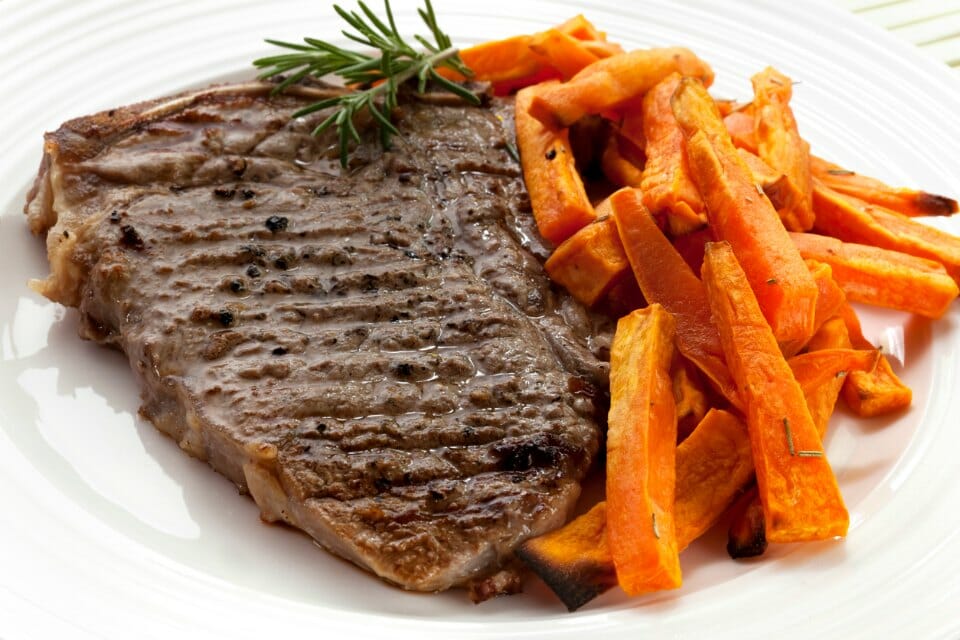Steak is a popular choice for meat lovers around the world, known for its rich flavor and satisfying texture. But have you ever wondered how many calories are in a steak? In this article, we will explore the calorie content of different types of steaks and discuss factors that can affect the calorie count. Whether you’re watching your calorie intake or simply curious about the nutritional value of your favorite cut of meat, read on to discover the calorie information behind that juicy steak.
I. Calorie Variations in Different Cuts of Steak:
A. Ribeye Steak: Known for its marbling and tenderness, ribeye steak is one of the higher-calorie cuts due to its higher fat content. On average, a 3-ounce (85g) serving of ribeye steak contains around 250-300 calories. B. Filet Mignon: This lean and tender cut of beef is typically lower in calories compared to fattier cuts. A 3-ounce (85g) serving of filet mignon generally ranges from 200-250 calories. C. New York Strip Steak: With a good balance of fat and tenderness, New York strip steak falls in the middle range of calorie content. A 3-ounce (85g) serving of New York strip steak typically contains around 225-275 calories. D. Sirloin Steak: A popular choice for its affordability and flavor, sirloin steak can vary in calorie content depending on the specific cut and fat content. On average, a 3-ounce (85g) serving of sirloin steak ranges from 200-250 calories. E. T-Bone Steak: This cut combines two different muscles—the tenderloin and the strip loin—making its calorie content a bit higher. A 3-ounce (85g) serving of T-bone steak typically contains around 275-325 calories.
II. Factors Affecting Calorie Count: A. Fat Content:
The amount of visible fat marbling and trimming on a steak affects its calorie content. Higher fat content generally translates to more calories. B. Cooking Method: The way steak is cooked can impact its calorie count. Grilling or broiling a steak without additional fats or oils will generally result in fewer added calories compared to pan-frying or sautéing with oils or butter. C. Seasonings and Sauces: Adding sauces or seasonings can add extra calories to your steak. Cream-based sauces or butter-based marinades tend to contribute more calories compared to lighter options like herbs, spices, or citrus-based marinades.
III. Portion Size and Calorie Control:
A. Paying attention to portion sizes is crucial for managing calorie intake. Most nutritional information is based on standardized portion sizes, such as 3 ounces (85 grams). Be mindful of the size of the steak you’re consuming to accurately estimate calorie intake. B. Trimming visible fat and removing excess skin before cooking can help reduce calorie content. C. Pairing steak with healthier side dishes such as steamed vegetables or a salad can balance out the overall calorie content of a meal.
IV. Nutritional Benefits of Steak: A. Protein:
Steak is a good source of high-quality protein, which is essential for muscle repair and growth. B. Vitamins and Minerals: Steak contains important nutrients like iron, zinc, vitamin B12, and other B vitamins that support overall health and well-being. C. Fatty Acids: Some cuts of steak, such as grass-fed beef, can provide beneficial omega-3 fatty acids, which are known for their heart-healthy properties.
Conclusion:
When it comes to calorie content, steaks can vary depending on the cut, fat content, and cooking method. Understanding the approximate calorie ranges for different cuts of steak can help you make informed decisions about portion sizes and meal planning. Remember to balance your steak consumption with a variety of other nutrient-dense foods and practice portion control for a well-rounded and balanced diet. So, the next time you savor a juicy steak, you can appreciate its taste and nutritional value while keeping calorie considerations in mind.

